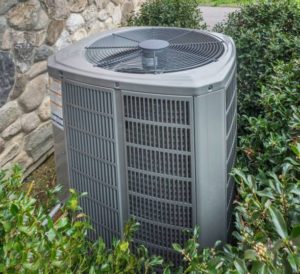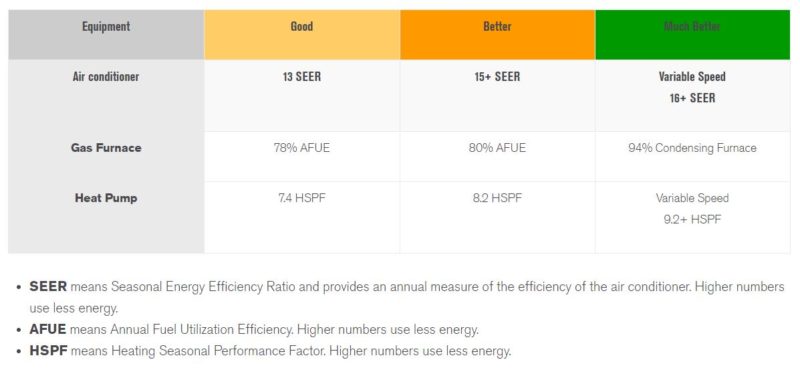 When you buy a new air conditioning or heating unit to replace your old one — or if a completely new system is being installed in your new home — the installer needs to know how big or, more importantly, how small the unit should be. In order to know exactly how big (or small) it should be, the contractor needs to calculate how much cooling and heating capacity it must have to keep the occupants comfortable. This is called the load of the home.
When you buy a new air conditioning or heating unit to replace your old one — or if a completely new system is being installed in your new home — the installer needs to know how big or, more importantly, how small the unit should be. In order to know exactly how big (or small) it should be, the contractor needs to calculate how much cooling and heating capacity it must have to keep the occupants comfortable. This is called the load of the home.
The load of the home is partly dependent upon the home’s square footage. However, a true load calculation goes beyond that. An accurate load determination includes building construction; orientation to the sun; “R” value of the insulation; number, size, and placement of rooms; number, size, and placement of windows and doors; types of windows and doors (thermal efficiency); number and arrangement of floors; and the climate.
Residential load calculations make use of mathematical formulas that take all these variables into consideration. They have been computerized, so they’re not as time-consuming as they were in the past.
 Determining the load by using rules of thumb almost always leads to an over-sized heating and cooling system, resulting in an increased initial cost, increased monthly utility bills, increased maintenance, and shortened equipment life because the equipment cycles off and on too frequently.
Determining the load by using rules of thumb almost always leads to an over-sized heating and cooling system, resulting in an increased initial cost, increased monthly utility bills, increased maintenance, and shortened equipment life because the equipment cycles off and on too frequently.
Who Does the Load Calculation?
The contractor you choose to install your new system should be able to perform these calculations. You may ask him for this service. If he doesn’t want to do it, or says it isn’t necessary, you may want to look for a different contractor. In some areas, the local utility will perform a load calculation – check with your local utility.
Why it’s Important to Have the Right Sized System
Having the wrong-size heating-cooling system can lead to multiple problems. Over-sizing your cooling system is not a good thing. Without getting into too much detail, your cooling load consists of two parts:
-
The temperature of the air, called the sensible load.
-
Moisture or “humidity” in the air, called the latent load.
We’ve all heard the saying, “It’s not the heat; it’s the humidity.” A cooling system that is too big cools down the temperature very quickly, but it does not run long enough to remove sufficient moisture or “humidity” from the air. The result is you feel cool but clammy. Many people then turn down the thermostat to make the air conditioner run longer, increasing the utility bill. In some cases, the insufficient moisture removal resulting from over-sized cooling equipment can lead to mold growth and other types of moisture-related damage.
A correctly sized cooling system runs long enough to “wring” moisture out of the air. This allows you to be comfortable at a slightly higher thermostat setting and allows you to save money on your utility bill. It also takes care of the “mugginess” without making you feel too cold.
Air conditioning systems are sized in “tons,” which is a measure of the rate at which they deliver cooling, not how much they weigh. One ton of cooling is equal to 12,000 Btu/h (British Thermal Units per hour), the rate of cooling required to freeze one ton of ice at 32°F in one day.
It is better to have a system that supplies a little less than the required tonnage of cooling, rather than a system that supplies more than the required tonnage of cooling.
Heating and Cooling Equipment Efficiency Ratings
The table below shows efficiency ratings for good, better and much better heating and cooling equipment.
For Existing Homes
For existing homes, the contractor should also check the condition of your ducts. Ducts deliver heated or cooled air to your rooms. Ducts that excessively leak air or that do not deliver the right amount of air to each room can increase operational cost from a few percent to over 50%.
For more information contact Winters Heating & Cooling.
Winters Heating & Cooling is a family owned and operated HVAC company, which has served Southern Maryland since 1948. Winters was at the forefront of St. Mary’s and Calvert County development through the 80’s and 90’s – both commercial and residential, with notable projects including Hollywood Volunteer Fire Department, and renovations of Sotterly and Historical St. Mary’s City. Now a smaller operation, we carry with us the same professional knowledge and integrity which has remained steadfast years later.
The legacy behind Winters Heating & Cooling began with the story of Dorothy and Bill Winters Sr. who were married in 1939, Bill at age 20 and Dorothy 22. Four years after serving in the Navy, Bill returned to Washington D.C.and joined the sheet metal union. Several years later the couple returned to St. Mary’s County with their new family and founded Winters Sheet Metal in 1948, housing the business in a tobacco barn on the property of Dorothy’s family in Drayden, MD, a member of the Knott family. The following year the operation was relocated to land purchased along Route 5 in Redgate, where it remains decades later, providing the Southern Maryland community with quality heating and air conditioning service and products.


